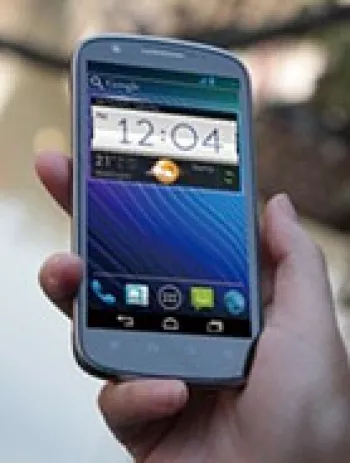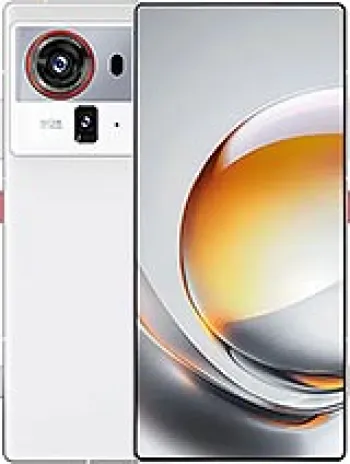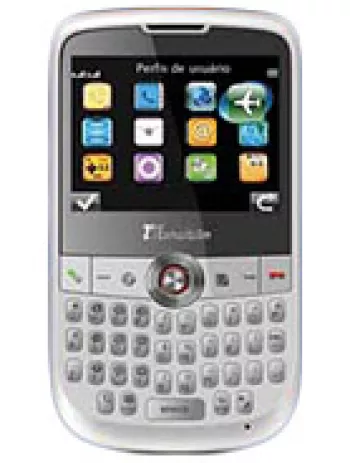
Overview
The ZTE PF112 HD was a promising smartphone announced in February 2012. However, it faced an unfortunate cancellation before hitting the markets. Despite this, the specifications of the device give us a glimpse into what could have been a competitive entry in the smartphone market at that time. With its sizeable and high-resolution display, decent processing capabilities, and a focus on multimedia functionalities, the PF112 HD was aimed at users looking for a robust everyday smartphone.
Network Capabilities
The device was designed to support both GSM and HSPA technologies, promising a reliable performance in terms of mobile network connectivity. The supported 2G bands included GSM 850/900/1800/1900, while the 3G bands covered HSDPA 900/1900/2100. This range of support indicates that the device was intended to cater to a broad audience across various regions. It promised HSPA speeds of up to 21.1 Mbps download and 5.76 Mbps upload, which, at the time, were quite impressive for seamless browsing and streaming experiences.
Design and Build
With dimensions measuring 130 x 66 x 8.5 mm (5.12 x 2.60 x 0.33 in), the ZTE PF112 HD was compact yet substantial enough to host a 4.5-inch display. The device utilized a Mini-SIM and offered a sleek profile with its relatively thin build, making it an attractive choice for users preferring a balance between screen size and carry comfort. Though its weight wasn't specified, its dimensions suggest a well-balanced device in terms of aesthetics and ergonomics.
Display
The TFT display was one of the standout features of the PF112 HD, boasting a size of 4.5 inches with a resolution of 720 x 1280 pixels and a 16:9 aspect ratio, resulting in a sharp pixel density of approximately 326 ppi. This high pixel density would have ensured clear and vibrant visuals, whether for browsing, viewing images, or watching videos, putting it in the competitive territory for display quality at the time of its announcement.
Performance
Running on Android 4.0 (Ice Cream Sandwich), the device was equipped with 1GB RAM and 8GB of internal storage, expandable via a microSDHC card. This combination would have provided sufficient performance for typical smartphone tasks of the era, including web browsing, app usage, and multitasking, although it would not match the performance of higher-end devices.
Camera Capabilities
The ZTE PF112 HD featured an 8 MP autofocus main camera with LED flash, capable of recording 720p videos at 30fps. These specifications positioned it well for users interested in casual photography and video recording. Additionally, a 2 MP front-facing camera was included for selfies and video calls, which was quite reasonable at the time and catered to the growing trend of social media and video communication.
Audio and Communication
For audio, the device included a loudspeaker and a 3.5mm headphone jack, ensuring versatility in audio output methods. In terms of connectivity, the PF112 HD supported Wi-Fi 802.11 b/g/n, DLNA, UMA, and hotspot capabilities, along with Bluetooth 3.0 with A2DP and EDR for wireless connections. GPS and A-GPS were included for positioning services, and the device also featured a stereo FM radio with RDS for on-the-go entertainment. The microUSB 2.0 port with MHL TV-out capabilities expanded its utility for media consumption and connectivity.
Sensors and Additional Features
Sensors included an accelerometer, gyro, proximity sensor, and compass, providing a comprehensive suite of sensing capabilities for various applications and features. These sensors ensured that the device could handle a wide range of applications and user interactions smoothly.
Battery and Power Management
Powering the ZTE PF112 HD was a removable Li-Ion 1650 mAh battery, which was typical for smartphones of its time. This capacity would have supported a full day of moderate use, catering to communication, entertainment, and light applications, though it may have required daily charging for more intensive users.
Conclusion
Overall, the ZTE PF112 HD was positioned as a well-rounded smartphone offering decent specifications for its time. Despite its cancellation, the device showcased a balance of performance, design, and connectivity that could have appealed to a wide range of users. The blend of a vivid display, adequate camera set-up, and essential smartphone features marked it as a competitive choice in the Android smartphone market of the early 2010s. Its cancellation left questions on its potential impact, but the disclosed specifications reflect a device that aimed to deliver a solid user experience at an affordable price point, indicative of the brand's strategy to offer value-driven products.
Key Features of ZTE PF112 HD
- Network Technology: GSM / HSPA
- High-speed Internet: HSPA 21.1/5.76 Mbps
- Slim Design: 130 x 66 x 8.5 mm
- Vivid Display: 4.5 inches with 720 x 1280 pixels resolution (~326 ppi density)
- Operating System: Android 4.0 (Ice Cream Sandwich)
- Expandable Storage: microSDHC support
- Inbuilt Memory: 8GB with 1GB RAM
- Primary Camera: 8 MP with autofocus and LED flash
- Front Camera: 2 MP
- Sound Features: Loudspeaker and 3.5mm jack
- Connectivity Options: Wi-Fi, Bluetooth 3.0, GPS, A-GPS
- Additional Features: FM radio with RDS, microUSB 2.0 with MHL TV-out
- Sensor Technologies: Accelerometer, gyro, proximity, compass
- Battery: Removable Li-Ion 1650 mAh
Disadvantages of ZTE PF112 HD
- Launch Cancelled: The device was announced in February 2012 but was ultimately cancelled and never released to the market.
- Outdated Operating System: Runs on Android 4.0 (Ice Cream Sandwich), which is significantly outdated compared to current versions, likely affecting app compatibility and security.
- Limited Battery Capacity: Comes with a removable Li-Ion 1650 mAh battery, which may lead to shorter battery life than desired for modern day usage.
- Low Internal Storage: Offers only 8GB of internal storage, limiting the amount of app installations and storage of media without relying heavily on external microSD cards.
- Older Bluetooth Version: Utilizes Bluetooth 3.0, missing out on the improved speed and efficiency of newer Bluetooth versions.
- Modest Camera Features: 8 MP main camera with basic autofocus and LED flash, along with 720p video capture, lagging behind in advanced camera technology.
- Basic Display Technology: Uses a TFT display, which may not provide the same color accuracy and viewing angles as more modern display technologies such as IPS or AMOLED.
- No Weight Specification: The weight of the device is unspecified, which could affect user expectations regarding comfort and portability.
View Also
More Phones
All Rights Reserved +14266 Phones © Mobilawy 2025
























